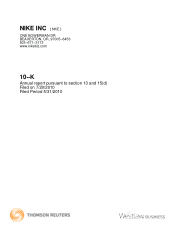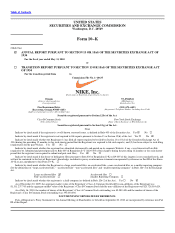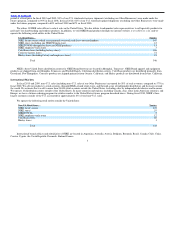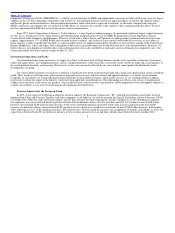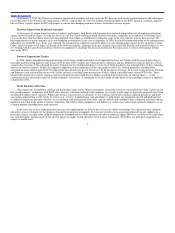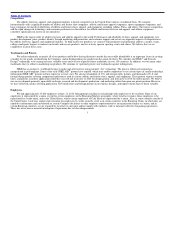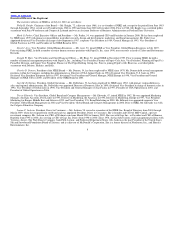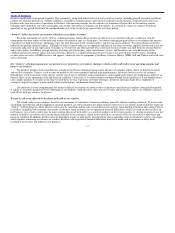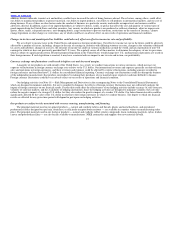Nike 2010 Annual Report Download - page 10
Download and view the complete annual report
Please find page 10 of the 2010 Nike annual report below. You can navigate through the pages in the report by either clicking on the pages listed below, or by using the keyword search tool below to find specific information within the annual report.
Table of Contents
Competition
The athletic footwear, apparel, and equipment industry is keenly competitive in the United States and on a worldwide basis. We compete
internationally with a significant number of athletic and leisure shoe companies, athletic and leisure apparel companies, sports equipment companies, and
large companies having diversified lines of athletic and leisure shoes, apparel, and equipment, including Adidas, Puma, and others. The intense competition
and the rapid changes in technology and consumer preferences in the markets for athletic and leisure footwear and apparel, and athletic equipment,
constitute significant risk factors in our operations.
NIKE is the largest seller of athletic footwear and athletic apparel in the world. Performance and reliability of shoes, apparel, and equipment, new
product development, price, product identity through marketing and promotion, and customer support and service are important aspects of competition in
the athletic footwear, apparel, and equipment industry. To help market our products, we contract with prominent and influential athletes, coaches, teams,
colleges and sports leagues to endorse our brands and use our products, and we actively sponsor sporting events and clinics. We believe that we are
competitive in all of these areas.
Trademarks and Patents
We utilize trademarks on nearly all of our products and believe having distinctive marks that are readily identifiable is an important factor in creating
a market for our goods, in identifying the Company, and in distinguishing our goods from the goods of others. We consider our NIKE ® and Swoosh
Design® trademarks to be among our most valuable assets and we have registered these trademarks in over 150 countries. In addition, we own many other
trademarks that we utilize in marketing our products. We continue to vigorously protect our trademarks against infringement.
NIKE has an exclusive, worldwide license to make and sell footwear using patented “Air” technology. The process utilizes pressurized gas
encapsulated in polyurethane. Some of the early NIKE AIR® patents have expired, which may enable competitors to use certain types of similar technology.
Subsequent NIKE AIR® patents will not expire for several years. We also have hundreds of U.S. and foreign utility patents, and thousands of U.S. and
foreign design patents covering components and features used in various athletic and leisure shoes, apparel, and equipment. These patents expire at various
times, and patents issued for applications filed this year will last from now to 2024 for design patents, and from now to 2030 for utility patents. We believe
our success depends primarily upon skills in design, research and development, production, and marketing rather than upon our patent position. However,
we have followed a policy of filing applications for United States and foreign patents on inventions, designs, and improvements that we deem valuable.
Employees
We had approximately 34,400 employees at May 31, 2010. Management considers its relationship with employees to be excellent. None of our
employees is represented by a union, except for certain employees in the Emerging Markets geography, where local law requires those employees to be
represented by a trade union, and in the United States, where certain employees of Cole Haan are represented by a union. Also, in some countries outside of
the United States, local laws require representation for employees by works councils (such as in certain countries in the European Union, in which they are
entitled to information and consultation on certain Company decisions) or other employee representation by an organization similar to a union, and in
certain European countries, we are required by local law to enter into and/or comply with (industry wide or national) collective bargaining agreements.
There has never been a material interruption of operations due to labor disagreements.
7

